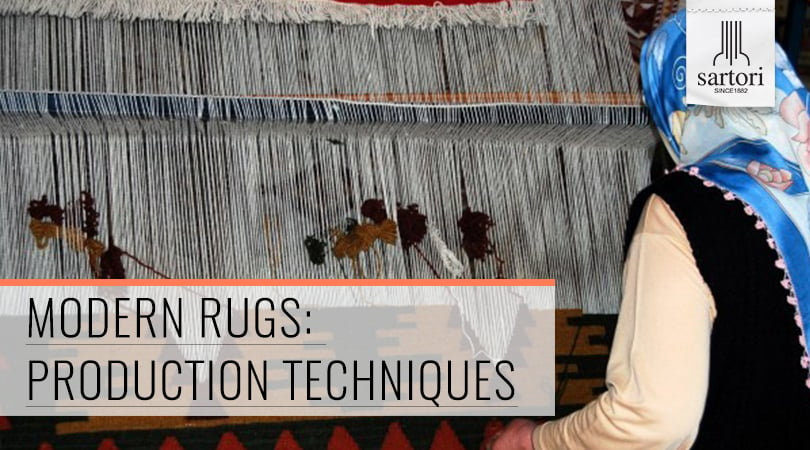
Nowadays you can find just about anything on the internet, including poor-quality modern rugs. Most people looking for a rug know very little about the different steps in the production process and usually make their decision based only on their own personal impression and the salesman talk. But it takes more than that to be sure of making the best buy.
The modern rugs available on today's market are very different to those we have chosen to deal with: they may look the same but in terms of quality they are very different, which more than justifies any, albeit small, differences in price.
The difference between a quality rug and all the others lies in the details. So, let's take a look at the differences in rugs based on production techniques.
- HAND-KNOTTED. This technique makes the highest quality rugs and the manual skills involved make a product which is unique. The rug is made with thousands of knots made individually by hand. The higher the number of knots per square metre, the higher the quality of the rug. The end product is top of the range in terms of quality, also because this technique gives higher definition to the pattern. The labour involved constitutes a significant aspect of its value, as does the fact that it can be maintained and restored along with the overall prestige of the rug. It takes longer to manufacture than other rugs, requiring at least three craftsmen with work progressing at a rate of just a few tens of centimetres a day. A hand-knotted rug is easy to recognise: when you flip it over and look at the back, you will see the exact same pattern as you have on the front.
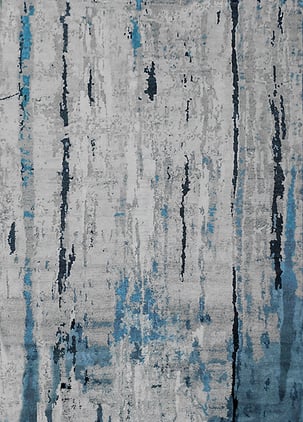
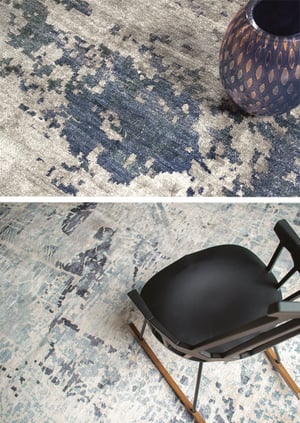
- HANDLOOM. This technique is the most commonly used for making rugs with simple patterns: one or just a few colours or simple geometrical shapes. This technique combines the knotting of certain yarns which makes a stronger and longer-lasting rug with the same manufacturing cost as that of a hand-tufted rug, as it can be made far more quickly than a hand-knotted rug. Obviously, being knotted, it still has the advantage of being a rug which can be maintained. It therefore represents an excellent compromise between quality and price. The weak point in this quality of rug lies in the limitations of designs which can be worked into it.
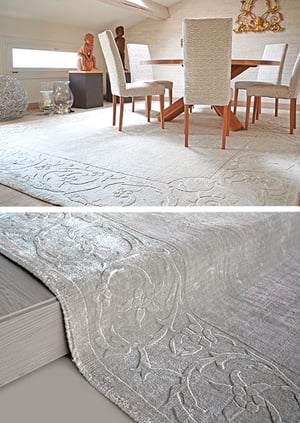
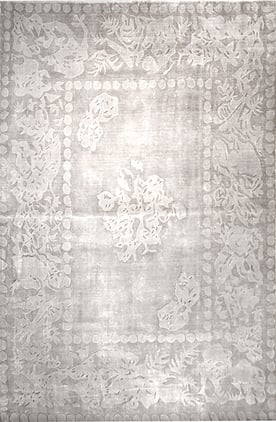 HAND-TUFTED. This is a very common technique which involves the use of a special automatic tufting gun held by the hand of a technician who traces a preset pattern onto a canvas backing using the selected yarn. If you flip this kind of rug over you will see a layer of fabric glued to the back which holds the "fired" yarn pile in place. Consequently, you cannot see the rug's pattern on the back. This quality of rug offers three strong points: speed of production, good definition of the pattern and a very affordable price.
HAND-TUFTED. This is a very common technique which involves the use of a special automatic tufting gun held by the hand of a technician who traces a preset pattern onto a canvas backing using the selected yarn. If you flip this kind of rug over you will see a layer of fabric glued to the back which holds the "fired" yarn pile in place. Consequently, you cannot see the rug's pattern on the back. This quality of rug offers three strong points: speed of production, good definition of the pattern and a very affordable price.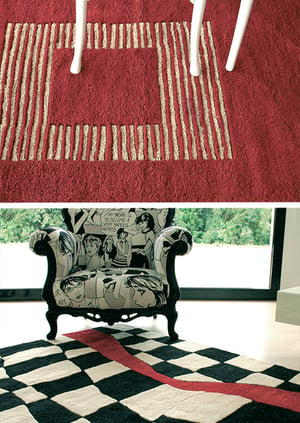
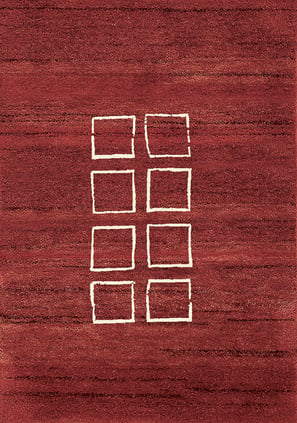
If you want to discover all the secrets to decorate your home with the finest rugs, download our free guide now!


